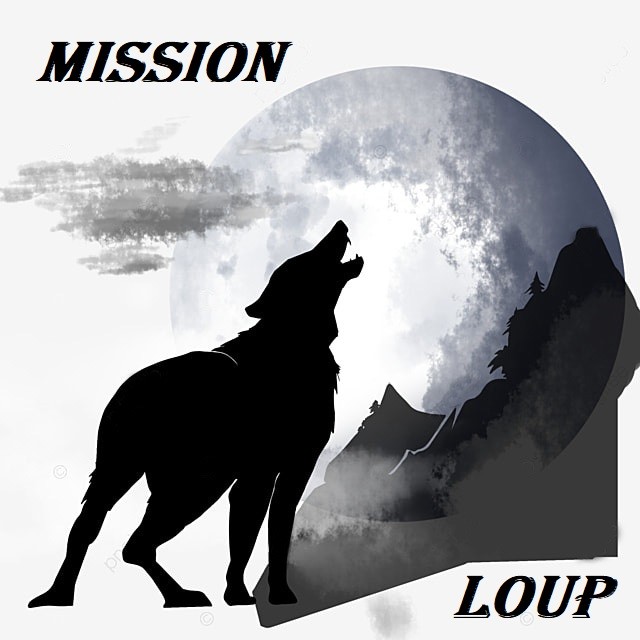Our team spends countless nights in the field, armed with thermal imaging cameras. Let's not kid ourselves: in Switzerland, observing a pack of wolves during the day, hoping to film predation attempts or intraspecific interactions, is virtually impossible. To do so, you have to go to places where deer and canids are not persecuted or hunted. The Abruzzo region is one of many where success rates are significantly higher. But the Abruzzo is not Switzerland, so caution is needed when comparing the different factors at play.
We spent much of the spring conducting surveys in the areas we were studying, i.e., areas where prey animals settle during this season, which could lead us to wolves. As the saying goes, “Where there is prey, there is prey.” And in reality, this is often the case. There is no point in searching for wolves in mountainous or forested areas without any landmarks. All you need to do is understand the migratory patterns of prey species, follow them, and the wolves will eventually show up. That night, we were waiting in an area where deer are very common at this time of year. Most of them were males, ranging from young deer aged 2-3 years to older, more imposing individuals with 12 to 16 antlers.
We waited hidden in a bush at the side of the road, as deer frequently cross from one meadow to another. We saw four large male deer approaching, their antlers already well grown for the time of year. They stood about thirty meters away, busy feeding on the rich grass. Suddenly, we heard the sound of rustling leaves, indicating the presence of an animal below us in the forest. We saw a fox pass by, but the heavy footsteps and noise did not match those of a small canid. Within seconds, just ten meters away, we saw a large male deer emerge, accompanied by a young deer whose antlers had not yet grown. Being so close is always exhilarating, and we were thrilled.
The two deer advanced toward the group of four individuals about thirty meters away, when suddenly we saw them freeze! The four deer began to run, and then, appearing out of nowhere like a ghost, the wolf came out of the forest and gave chase. The chase ended very quickly. The deer had only run about thirty meters when one of them stopped and confronted the wolf, face to face! Realizing that his attempt had failed, having been unable to take advantage of the element of surprise or a bad decision by one of the group, the wolf stopped running and then, right before our eyes, a rather fascinating scene unfolded: the wolf and the deer stared at each other for 20-30 seconds, an interesting communication to contemplate between the defeated predator and the deer, who, at the height of his confidence, even allowed himself to look away from the predator! Then the wolf, defeated, turned around and went back where it had come from, coming within 15 meters of our hide, eventually sensing our presence.
The deer, meanwhile, remained in the meadow for another hour or so, continuing to feed without being affected or stressed. The wolf disappeared into the night, continuing its hunt elsewhere. We observed several attempts by the wolf to hunt deer and we consistently saw the male deer confront the wolf, while the does and young stags fled in a stampede over longer distances (between 50 and 200 meters on average). We have noticed that male deer, as soon as their antlers grow and give them an advantage in terms of protection, do not hesitate to stay where they are, watching the wolf or fleeing only over very short distances, averaging between 20 and 50 meters.
When attempts are made during the rut, some males leave with their females, not because they are afraid of the wolf, but to prevent them from scattering and being “picked up” by other males further away. It is interesting to observe these interactions, which clearly demonstrate the power and confidence of the male deer and the vigilance of the does, who are often the first to notice a scent or presence and spot the predator.
The relationship between deer and wolves is much more natural than many opponents believe. Prey animals quickly learn to assess situations and the behavior of predators and know how to spot when they are in danger. During the day, we were able to observe, from a great distance, does allowing the wolf to pass, giving it only a glance and showing normal vigilance. But at night, they flee quickly and over long distances, even if the wolf is just passing by nonchalantly. They perceive the danger at night.
We were able to film a wolf emerging quietly, causing a herd of 34 deer (2-3 males and does/fawns) to flee in a domino effect with impressive sounds of galloping, leaving only one male deer to confront it. The wolf made no attempt to attack, but trotted over to a place where the deer were rolling around (a small hollow in the dry ground) and rolled around himself, getting up, shaking himself off, and rolling around again for 1-2 minutes. Then it left, as casually as it had arrived. This was Arsene, the breeding male of the pack, now deceased following the 2023/2024 proactive culling.
Our observations were made with one or two wolves at most, never in the presence of the entire pack. We will explain all this in our final report, but it is clear that the relationships between prey and predators and the management of hunting within a pack are issues that need to be documented in order to better understand them. It is also important to take into account the fact that each pack is unique, with its own way of managing its territory, its numbers and its hunting, which is constantly evolving depending on many factors. We hope that this short, previously unseen video will help you better understand the interactions between deer and wolves in Switzerland, using the example of this pack and this particular situation.
The exchange of glances remains a non-verbal but very significant form of communication between wolves and deer. It was a magical moment. That evening, the wolf also passed within two meters of us at another location. And a month earlier, a female wolf passed by 6 meters away, so we have been very lucky at the start of 2025. And for the naysayers, the whole team is still alive and kicking.
Enjoy the video and see you soon for more adventures!
Article: Team Mission Loup
Photo: Pietro Santucci
Video: Mission Loup


